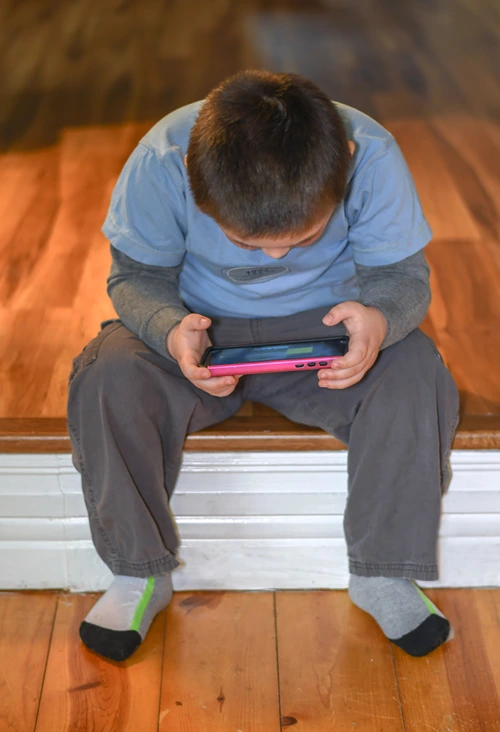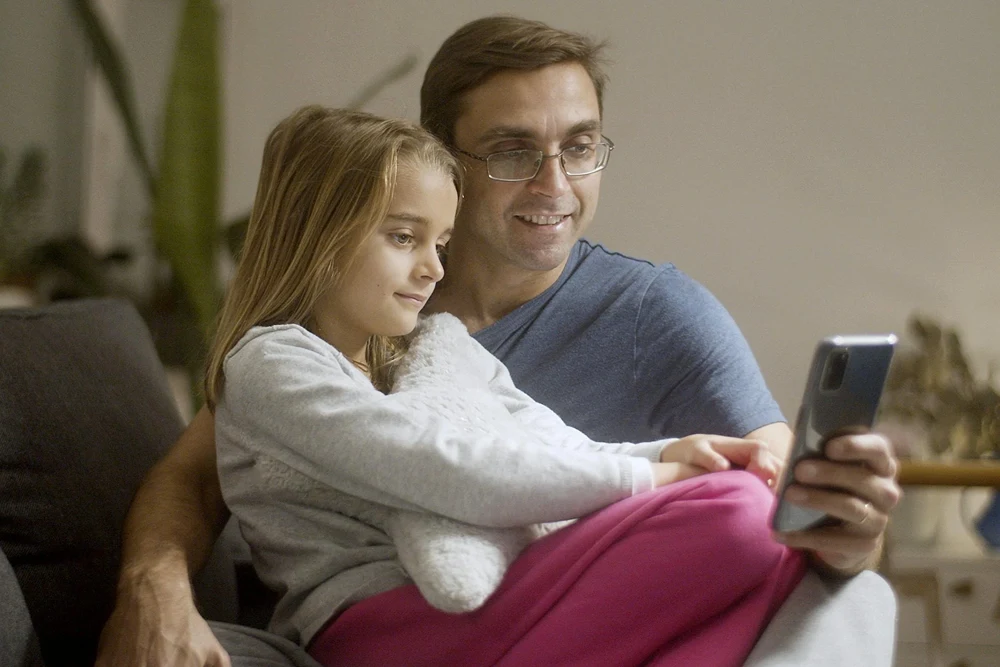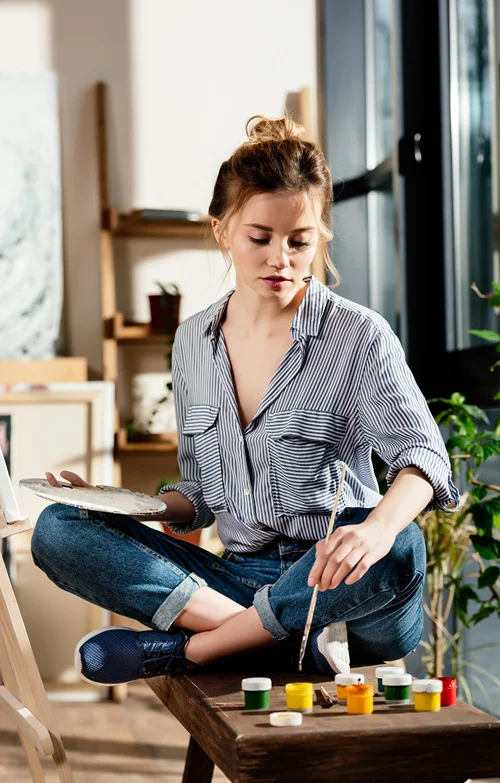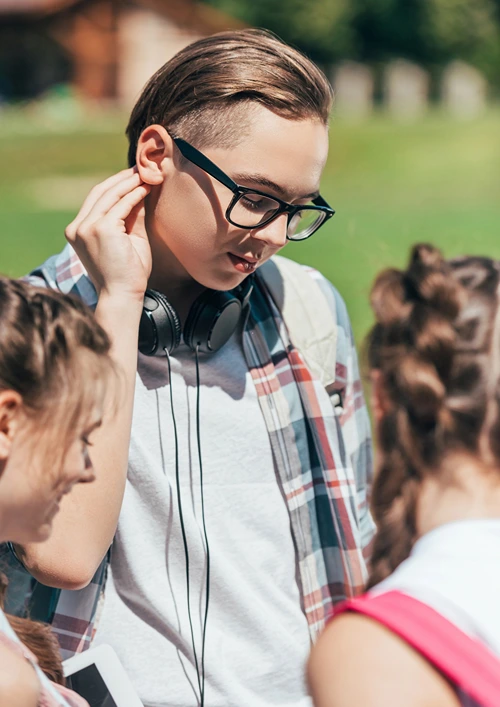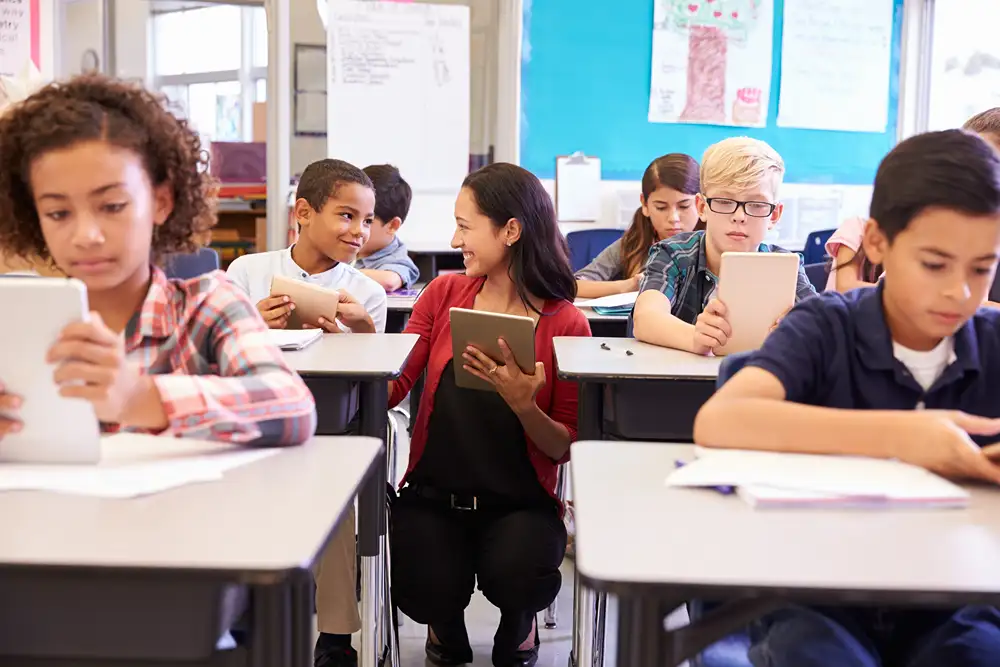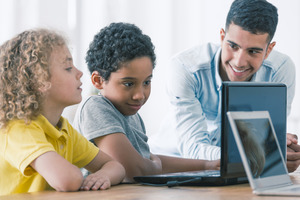Eye to screen distance: Tips for parents on how to protect their children’s eyes
Protecting children’s eyes from digital screens is more crucial than ever, as they spend increasing time with smartphones, tablets, and computers. Ensuring a safe viewing distance is pivotal for avoiding eye strain, dryness, and myopia. Studies show that extended near-focus tasks contribute to childhood eye fatigue.
Dependence of Visual Health on the Distance to the Screen: Statistics
Research highlights how proximity to screens affects eye health. The American Optometric Association [1] warns that sitting too close can trigger digital eye strain, manifesting as headaches and blurred vision, and raising the risk of progressive myopia. Meanwhile, the World Health Organization (WHO) [2] reports a global rise in myopia among children, linking it partly to prolonged close-up screen use. In certain regions, such as parts of Asia, over 70% of young adults are nearsighted, indicating a strong correlation between lifestyle changes and vision decline.
When children hold devices inches from their faces, the eyes overwork to accommodate near vision. Chronic stress on the ciliary muscles can lead to elongation of the eyeball, raising the likelihood of myopia. Multiple studies [3] confirm that steady near tasks, like reading or gaming on phones, increase nearsightedness in children. These findings underscore the need for parents and kids to learn good viewing habits.
Maintain the Proper Distance from Your Eyes to the Screen
Experts often recommend a 50–70 cm (20–28 inches) gap for desktops or laptops and 30–40 cm (12–16 inches) when holding smartphones or tablets. While everyone’s comfort may differ, these ranges can drastically reduce visual strain. Keep the screen at eye level and adjust brightness to match surrounding light, preventing glare and pupil fatigue.
Children should use stands or holders to maintain a stable distance. Encourage them to enlarge text or images instead of bringing the device closer. Emphasizing that proper distance is key to comfort can help shape healthy screen habits early on.
The Impact of Gadgets on the Vision of School-Age and Preschool Children
Children’s eyes are still developing, making them more vulnerable to near work. A review in Ophthalmology [4] indicates a higher risk of myopia among kids who engage heavily in close-up tasks, versus those who combine screen time with outdoor play. Younger children may not communicate discomfort well, so watch for signs like squinting or rubbing eyes.
Excessive device use can also disturb sleep by exposing children to blue light. The American Academy of Pediatrics [5] advises limiting screen time before bed and encouraging physical activity breaks. Poor posture, such as holding gadgets just inches away, can lead to muscle strain and headaches, worsening overall well-being.
One easy method is the 20-20-20 rule: every 20 minutes, look at something around 20 feet away for 20 seconds. This lets the eyes shift focus and rest. Time outdoors provides further benefits, as natural light and varied focal distances may slow myopia progression [6]. Adequate indoor lighting, glare reduction, and increased font sizes also help preserve comfort.
Establishing routines around device use is vital. Set time limits and plan screen-free periods for reading or outdoor activities. When children understand that these guidelines protect their eyesight, they tend to follow them consistently, building strong habits that deter future vision problems.
What Tools Are Available to Control the Distance from the Screen to the Eyes?
Various technologies now help parents manage viewing distances. Some devices contain built-in alerts when users lean in too close, while others offer blue light filters or adjustable brightness. This active monitoring fosters healthier posture and promotes safe viewing practices.
A notable example is the Eye Protection feature in the Parental Control Kroha app, which detects when a child’s face is too close to the screen and issues a friendly reminder to move back. This real-time feedback eases parental supervision by ensuring kids stay within recommended limits. Ultimately, success hinges on combining these tools with consistent education about proper screen usage.
Conclusion
Children’s eye health depends significantly on how they engage with digital devices. Maintaining a reasonable distance, taking breaks, and using specialized apps can ward off common issues like eye strain and myopia. With informed strategies, dedicated routines, and supportive technology, parents can preserve their children’s vision even in a screen-saturated world. Encouraging simple yet powerful habits now will yield lasting rewards for a lifetime of healthy eyesight.
References:
[1] American Optometric Association. (n.d.). Computer Vision Syndrome.
[2] World Health Organization (WHO). Blindness and Vision Impairment.
[3] He, M., Xiang, F., Zeng, Y., Mai, J., Chen, Q., Zhang, J. et al. (2015). Effect of Time Spent Outdoors at School on the Development of Myopia Among Children in China. JAMA.
[4] Huang, H.M., Chang, D.S., Wu, P.C. (2015). The Association between Near Work Activities and Myopia in Children – A Systematic Review and Meta-analysis. Ophthalmology.
[5] American Academy of Pediatrics. (2016). Media and Young Minds.
[6] Wu, P.C., Chen, C.T., Lin, K.K., et al. (2020). Myopia Prevention and Outdoor Activities. Ophthalmology.

